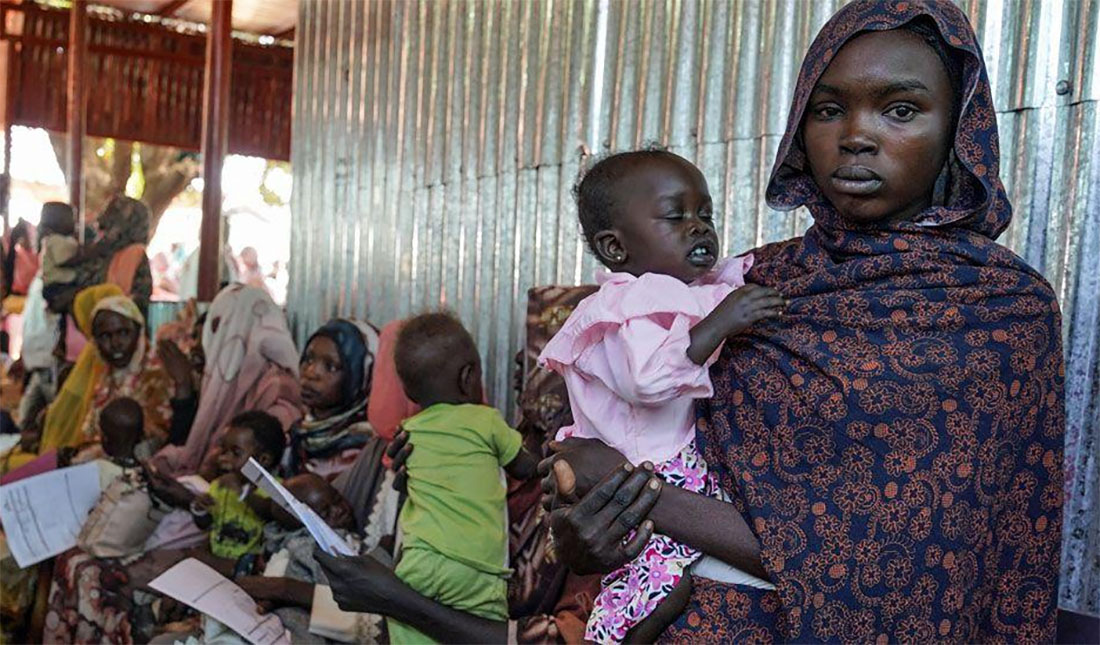
Photo Credit: Getty Images
In the conflict-ridden Darfur region of Sudan, the Zamzam camp for internally displaced people (IDPs) is grappling with a severe crisis. Satellite imagery released by the Yale Humanitarian Research Lab on Friday highlights a significant influx of displaced people and rising floodwaters that threaten to contaminate water and sanitation facilities. The camp, home to about 500,000 people, is now at heightened risk of cholera and other diseases.
The imagery reveals that nine out of 13 water points and numerous toilets at Zamzam have been inundated, compounding the already dire situation of extreme malnutrition. The camp has seen a surge in population due to recent clashes between Sudan's army and the paramilitary Rapid Support Forces (RSF), which erupted in April 2023. Brown floodwaters have submerged outdoor toilets and areas where people queue for water, increasing the risk of disease.
"We need water, food, healthcare, and for God to lift this curse from Sudan, nothing more than that," said Duria Abdelrahman, a new arrival at the camp who has yet to receive any aid. Women were seen cleaning leaves to eat, underscoring the desperate conditions.
Zamzam, the largest IDP camp in Sudan, has been declared famine-stricken by the world's global hunger monitor, only the third such assessment since the establishment of the Integrated Food Security Phase Classification (IPC) two decades ago. The RSF responded by declaring "full solidarity" with famine victims and reiterating its offer to collaborate with the United Nations to deliver aid, though aid workers report that both the army and RSF have obstructed humanitarian efforts.
"For humanitarians, our worst-case scenario, what we train for as the sum of all fears, is happening on the ground right now," said Nathaniel Raymond, executive director of the Yale Humanitarian Research Lab. He emphasized the compounded risks faced by the already vulnerable population due to contaminated floodwaters.
Zamzam is located near al-Fashir, the capital of North Darfur, a significant stronghold still resisting RSF control. At least 65 people were killed this week as the RSF besieged the city. The main hospital in al-Fashir is out of service following an RSF attack.
Residents of Zamzam and other IDP camps are trapped, unable to reach farms and lacking money for the limited food available. With little access to fresh water, many are forced to drink unsafe, contaminated water. The Yale researchers documented enough standing water in Zamzam to cover at least 125 soccer pitches and reported submerged toilets at local schools.
Sudan's health ministry reported 11,000 cholera cases nationwide as of early July, although none were recorded in North Darfur. However, the risk of waterborne diseases remains high, as previous outbreaks occurred during the devastating conflict that began in 2003.
Adam Rojal, spokesman for the Displacement Camps Coordinating Committee, highlighted that the dire conditions in Zamzam reflect a broader crisis affecting over 171 camps across Darfur. "This is not just the situation in Zamzam, but the condition of all the other camps in Darfur," he said.
As Sudan's humanitarian crisis deepens, urgent international assistance and coordinated efforts are crucial to prevent further loss of life and suffering.
















